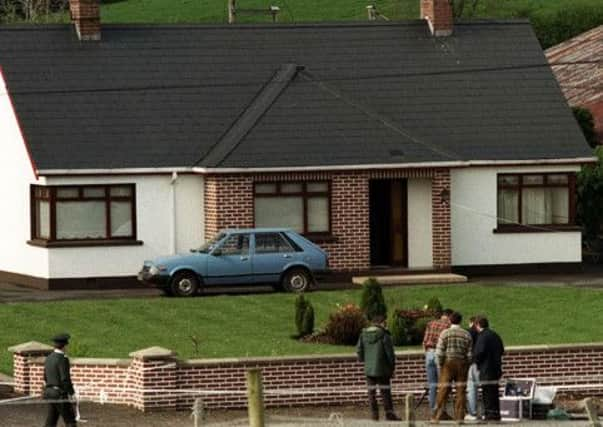Gun used to murder Dungannon pensioner ‘linked to state agent’


Brian Nelson, a UDA (Ulster Defence Association) man working for British intelligence, arranged for a large quantity of the Czechoslovakian VZ-58 assault rifles to be dispatched to loyalist terrorists operating during the late 1980s and early 1990s, it has been claimed.
The guns, which were used in conjunction with Chinese-manufactured steel-lacquered bullets, may have come into Northern Ireland via South Africa, the court was told.
Advertisement
Hide AdAdvertisement
Hide AdBarrister Barry Macdonald QC said: “This particular weapon was part of a consignment that had been arranged by Brian Nelson.”
The claims were made during a long-running inquest touching on the death of 76-year-old Roseann Mallon.
Ms Mallon, a spinster who suffered from arthritis was shot and killed while watching television at a relative’s house on May 8, 1994. She was unable to escape when the Ulster Volunteer Force (UVF) gunmen indiscriminately opened fire on her sister-in-law’s bungalow at Cullenrammer Road, Dungannon in Co Tyrone.
The UVF said its mid-Ulster brigade had been responsible and were targeting two of her nephews, Christopher Mallon - who was not home at the time, and Martin Mallon - who lived half a mile away. Both were involved with the republican movement.
Advertisement
Hide AdAdvertisement
Hide AdAfter the shooting, army spying equipment was found in a nearby field, sparking claims of security force collusion.
No one has ever been convicted of Ms Mallon’s killing however, high profile killer Billy Wright, who was murdered in 1997, and two other loyalists, were arrested and questioned.
Nelson, an agent provocateur who died in 2003, is understood to have been involved in planning at least two murders including solicitor Pat Finucane in 1989 and father-of-three Gerard Slane in 1988.
The inquest has resumed at Belfast’s Laganside court complex after a delay of more than a year.
Advertisement
Hide AdAdvertisement
Hide AdIt had been halted in December 2013 after it was established that the weapon involved had been misidentified in original police ballistic tests.
Meanwhile, it also emerged that the man leading the RUC special branch unit which microscopically analysed firearms and ballistic material to establish links between crimes was a former Harland and Wolff crane driver with no formal academic qualifications.
David Bradley, a former army corporal and senior scientific officer, led the team of three at the Weapons and Explosives Research Centre (Werc) which operated alongside the Northern Ireland Forensic Science laboratory at Seapark in Carrickfergus, Co Antrim.
Giving evidence from behind a screen, Mr Bradley said: “I did not have any professional qualifications. I had four years experience in the forensic science firearms laboratory and by that stage (1993/4) almost 18 years experience in microscopy.”
Advertisement
Hide AdAdvertisement
Hide AdEarlier the court was told that Mr Bradley, who retired in 2012, had incorrectly matched a weapon recovered at Kilmore in Loughgall, Co Armagh to the 1992 loyalist murder of Charles and Theresa Fox at The Moy in Co Tyrone.
In 2013 it was established that the rifle used to shoot Ms Mallon was also linked to eight other murders -- including the Fox deaths.
Mr Macdonald, representing the Mallon family, said: “It appears that there were numerous mistakes made and that the linkages were wrong.”
Mr Bradley replied: “It has transpired that way.”
He cited a heavy workload during the 1980s and 90s; the quality of the equipment and difficulties in tracing the steel lacquered bullets as possible reasons for the errors.
Advertisement
Hide AdAdvertisement
Hide AdHigh Court Judge Mr Justice Weir, who is presiding over the case said: “Surely the purpose of your (Mr Bradley’s) unit was to provide useful information to those charged with investigating the crimes.
“Nobody is suggesting you were deliberately wrong but, if your job was to provide helpful information there was not much point in providing information which was most unhelpful.”
Meanwhile, it was also revealed that Werc operatives did not keep records or working notes illustrating how they arrived at their findings.
Another Werc employee, whose identity was protected and who was referred to as witness C, accepted that their work fell short of the evidential standards required for court.
On Tuesday, it was revealed that the existence of Werc was not well known and had not been referred to in court documents before 2006.